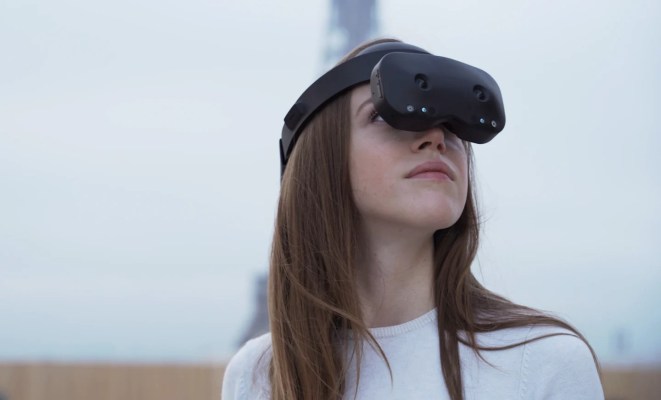W
elcome to the TechCrunch Exchange, a weekly startups-and-markets newsletter. It’s inspired by the daily TechCrunch+ column where it gets its name. Want it in your inbox every Saturday? Sign up here.
I would be lying if I said that mixed reality and generative AI were two of my favorite things. And yet, a Christmas Day TV special made me unexpectedly bullish about them. — Anna
Versailles 400
I am not an early adopter of the metaverse. The only VR headset I own is made of cardboard, and I haven’t felt the need for a better one yet — perhaps because I am not a gamer, either. But I am ready for things to change in 2024, with new mixed-reality experiences that cater to people like me.
I got a sense of what these new experiences could look like on Christmas Day, as I watched a unique show that took place at Versailles to celebrate its 400th anniversary. (Depending on your location, you may be able to check it out here.)
The brainchild of French electronic music pioneer Jean-Michel Jarre, the show featured his biggest hits, but also impressive visuals mixing the IRL audience with virtual avatars, all blending together in the castle’s famous Hall of Mirrors. I knew that VR shows could be fun, but I was still wowed.
Since I don’t have a VR headset, I watched the show on TV, not as an avatar. But that was probably the right call this time around anyway: While it wasn’t obvious in the livestream, the VR side of things was a victim of its own success, leaving many unable to join.
VRROOM (pronounced Vroom), the French startup in charge of the immersive experience, explained on X that “the overwhelming turnout, a testament to Jean Michel Jarre’s incredible fan base, unfortunately led to our servers being overloaded.” It is now working on organizing VR replays with a ticketing system to better handle demand, its COO Maud Clavier told me.
Despite these hiccups, Jarre’s latest endeavor was also an opportunity to showcase VR innovation from France, and not just from VRROOM. Lynx R-1, the mixed-reality headset that played a central role in his performance by letting him see both “worlds” at the same time, is the flagship device of French startup Lynx.
While Lynx’s CEO Stan Larroque wrote on LinkedIn that he was still “pinching [himself] that *this* happened,” December 25, 2023, wasn’t the company’s first moment in the spotlight. Lynx and VRROOM are part of the French Tech 2030 cohort, a batch of 125 emerging companies from various sectors awarded with special support from French institutions.
The two companies may be considered best in class when it comes to French VR, but all across the country, there’s a wider group of companies and organizations working on AR, VR and mixed-reality technology — often encompassed under the umbrella term of “extended reality,” or XR.
Aside from her role at VRROOM, Clavier is also president at CNXR, a trade organization championing French XR. This gives her a front seat to a sector in which she believes France excels “technically and artistically.” However, startups are struggling to get funded, and 2023 was a “difficult year,” she said.
Big dogs and underdogs
Having received several types of public subsidies, VRROOM has less to worry about than some of its peers, but it still needs to figure out how to best stay economically afloat until it becomes profitable.
Once fully live, VRROOM should be able to monetize its platform through a mix of ticketing, virtual merchandising and product placement. But the team knows it can’t outright search for the $20 million Clavier sees as “necessary to launching a world.” Instead, its current goal is to raise $6 million in seed funding to make it to the milestones that could unlock a Series A round.
As for Lynx, it already raised €6.5 million, in addition to the €725,000 brought by its initial Kickstarter campaign. But as the startup pointed out, Meta spent billions on its Reality Labs over the same period.
Even then, it took until August 2023 for Meta avatars to have legs, and only in beta. No wonder Lynx had to make “every single cent count” to launch its Lynx R-1 headset, which is priced at $849 in its standard edition and $1,299 in its enterprise version.
While not cheap, the Lynx R-1 is less expensive than Apple’s upcoming $3,499 Vision Pro, with which it shares similarities and which is rumored to be launching either later this month or in early February. Meanwhile, my colleague Brian Heater expects that within XR, all eyes will be focused on mixed reality at CES this year.
Aside from the focus shift toward stronger interaction between real and virtual elements, Apple’s entry into the XR space could cause renewed interest for all things metaverse. Perhaps what it needed all along was actual use cases, whether that’s in enterprise or in other fields.
Specialization, Clavier thinks, will make the metaverse sector healthier and make it possible for companies to excel in their domain. This could be music, but also mental health or edtech, for instance.
In notes she shared for our upcoming investor survey on edtech, Day One Ventures founder Masha Bucher predicted a “(re)emergence of the metaverse,” which she expects will amplify the ongoing shift “toward a more immersive learning experience.”
Of course, generative AI can add a new dimension to this, too. Jean-Michel Jarre and VRROOM have thoughts on this as well, so I am curious to see what they come up with next.
